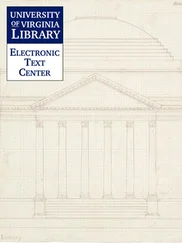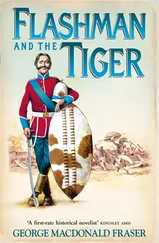The board’s primary mission was to screen inventions submitted by industry and private citizens. It had limited success. Out of 110,000 inventions submitted to the board, only 110 had enough promise to be evaluated with any detail. Only one went into actual production during the war. The NCB was a tough crowd. Edison himself came up with almost 50 wartime inventions. Not a single one was accepted by the Navy.
During World War II, things were markedly different. In June 1940, the United States created the National Defense Research Committee, under the leadership of Dr. Vannevar Bush, former dean of the MIT School of Engineering and, since 1938, chairman of the National Advisory Committee for Aeronautics (the predecessor to NASA). Its mandate was to “coordinate, supervise, and conduct scientific research on the problems underlying the development, production, and use of mechanisms and devices of warfare.” With this mission, the NDRC coordinated national research resources (both governmental and private industry), created new facilities for military research (like the Radiation Lab at MIT, integral to America’s work on radar), and conducted groundbreaking work on innovative technologies that could help win the war. In 1941, the NDRC became the Office of Scientific Research and Development (OSRD). Today, it is easy to conflate “science” and “technology,” or “research” and “development,” as though they always belonged together, like two sides of the same coin. But this wasn’t the case before World War II. It was the OSRD, also under the leadership of Dr. Bush, that took basic American scientific research and brought it together with the practical, development stage—something the NDRC was not equipped to do. The OSRD is the organization that took esoteric physics concepts about splitting atoms and chain reactions and made them go boom.
Government science did some magical things during the Second World War, but this didn’t mean that civilian scientists, engineers, inventors, and other patriotic (and entrepreneurial) Americans were not sending in their best ideas. Like they did in World War I, enterprising Americans flooded the government with thousands upon thousands of innovations to help the good guys win the war.
Most of them, as you might imagine, were… terrible. But one can also imagine that in the mass of paper sent in to the government by enthusiastic civilians, some good ideas got lost. Maybe tucked into the piles of submitted documents was an invention that could have changed the course of history. Something that could have made us live longer, feel better, live healthier, save the environment, end war, love more deeply.
And perhaps if the U.S. government hadn’t been spending millions of dollars and scads of resources trying to figure out how to turn bats into flaming balls of flying explosive terror, we might have found it.
• • •
Dr. Lytle Adamswas a dental surgeon from Irwin, Pennsylvania, a small town less than a square mile in area located southeast of Pittsburgh. Like many Americans, Dr. Adams heard of the Japanese attack on Pearl Harbor on the radio, while he was on vacation in New Mexico.
Adams was not your ordinary, run-of-the-mill dentist, though. He was also a fairly accomplished inventor. After the war, he had an idea for a fried chicken vending machine. That kind of genius doesn’t come around every day.
In 1930 he filed a patent for what he called a “Ship to Ship, Ship to Shore, and Shore to Ship Air Mail Transfer System and Apparatus.” The invention allowed for expedited mail delivery at a time when sending a letter overseas could take weeks, since much of the mail traveled via ship rather than plane. With Adams’s invention, you could shave a couple of hours off the transit time. It might not sound like much, but his idea was deemed good enough to be awarded patent number 1,973,244 in 1934. Though never implemented on a large scale, Adams’s air mail delivery system merits a place in history because it got him an introduction to First Lady Eleanor Roosevelt, who was given a demonstration by the inventor himself. Adams was also a licensed pilot, and he flew Roosevelt around in his own plane to show off his invention.
It’s hard to imagine that kind of thing happening today (without the Secret Service losing their collective minds), but perhaps Roosevelt and her security team were disarmed by Adams’s unassuming appearance. He is described by one contemporary as a “jolly-looking little man” who “looked like Santa Claus without a beard, cherubic and ruddy-faced, small and plump—his white hair stood out in wild disarray, and small, round piggy blue eyes never seemed to blink, but sparkled mischievously.” Not exactly Rock Hudson.
But he had grand ideas. When Adams heard the news of the devastation at Pearl Harbor, he was driving back from a trip to Carlsbad Caverns, home to what is believed to be the world’s largest bat colony. At that point, something in his inventor’s mind clicked:
1. The United States has access to thousands (maybe millions) of bats.
2. Japan is a country of cities and towns filled with houses made of paper and wood.
3. Bats love to fly into the attics, eaves, nooks, and crannies of whatever shelter is available. In Japan, that would mean the attics, eaves, nooks, and crannies of paper and wood houses.
4. If we could affix a small bomb to the bats…
5. Bats + incendiary devices + Japanese structures = WE WIN THE WAR!
6. Everyone gets vending machine fried chicken.
On January 12, 1942, just a little over a month after Pearl Harbor, Adams put his idea in writing… to the president of the United States (because hey, why not?). In his letter, which begins, “I attach hereto a proposal designed to frighten, demoralize, and excite the prejudices of the people of the Japanese Empire,” Adams lays out his scheme for the destruction of Japan. “The… lowest form of animal life is the BAT, associated in history with the underworld and regions of darkness and evil. Until now reasons for its creation have remained unexplained.”
That’s kind of a mean thing to say about bats, but at least he’s about to let us know God’s secret plan for our flying furry friends!
He continues, “This lowly creature” (we get it—you don’t like bats) “is capable of carrying in flight a sufficient quantity of incendiary material to ignite a fire.”
Burn it all down. And then bats will be a force for good!
At last, “If the use of bats in this all-out war can rid us of the Japanese pests, we will, as the Mormons did for the gull at Salt Lake City, erect a monument to their everlasting memory.”
What a nut.
Nevertheless, Dr. Adams had friends in high places, in particular the president’s wife. She made sure FDR saw the letter, and after reading it, he sent a quick note to William Donovan. At the time, he was known as the Coordinator of Information, and the director of an office of the same name whose job was to collect, analyze, and disseminate intelligence information.
FDR to Wild Bill: “This man is not a nut.” (Okay, I stand corrected.) “It sounds like a perfectly wild idea but is worth looking into.”
President Roosevelt had spoken, but that didn’t mean Donovan needed to do the “looking into” himself. The first chance he got, he dumped the idea straight on the lap of the NDRC. It was their problem now.
Meanwhile, Dr. Adams was a man on a mission. He traveled to Harvard University’s Psychoacoustic Laboratory to meet with scientists to refine his plan. There, he met Donald Griffin, who was at Harvard working on improving military communications equipment. He was also one of the world’s leading bat experts. Griffin discovered what many of us would later learn about bats in the third grade: Bats don’t see very well, yet they can successfully move around using sound reflected off objects in their way. Griffin called this acoustic form of navigation “echolocation.”
Читать дальше











